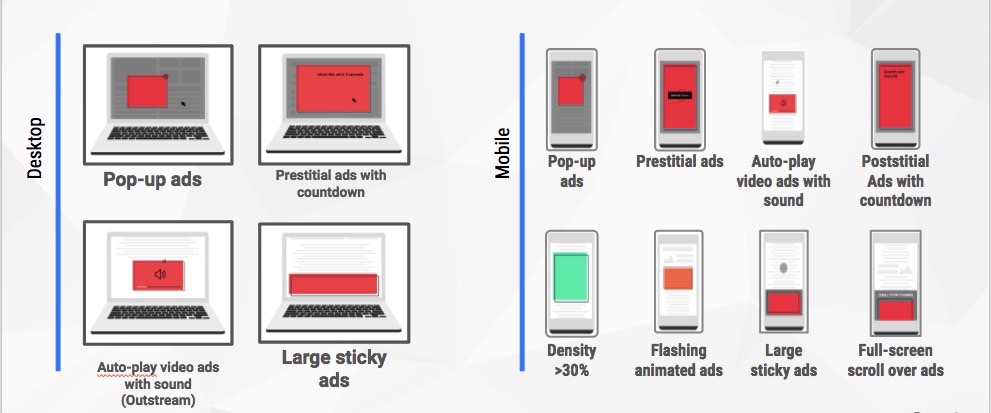These Are The Annoying Ads That Chrome's Ad Blocker Will Save Everyone From
First launched last year, Google's own ad blocker built into the Chrome browser is supposed to punish websites that favor intrusive ads, and improve the internet in the process. Running an ad blocker may sound counter-intuitive for Google, a company that makes tons of money from internet ads. But the company would rather be in control of a built-in ad blocker, one that comes built into its popular internet browser, than deal with alternatives from the competition. And that ad-blocking experience is going to be available worldwide this summer.
The ad blocker was launched about a year ago, but only users in Canada, Europe, and the US were able to use it. However, Google on Wednesday announced that the feature will be rolled out to all markets come July 9th. As before, Google will rely on the Better Ads Standards rule to filter out ads on websites that don't adhere to those regulations. Those standards, Google says, "identify 12 experiences that users find intrusive and that advertisers, publishers, and technology vendors should avoid showing," seen in the following infographic:

Google says that its goal isn't to filter ads, but to build a better web experience. So far, the initiative is supposedly working, at least according to Google. "As of January 1, 2019, two-thirds of all publishers who were at one time non-compliant to the Better Ads Standards are now in good standing. Further, out of millions of sites we've reviewed to date, less than 1% have had their ads filtered," the company explains.
Web owners have a tool that can help them improve the ad experience they offer to their customers, called the Ad Experience Report. The tool is available to international publishers right now, giving them plenty of time to test their sites and fix outstanding issues before the ad-blocker launches in those regions:
As always, if Google's default ad-blocking/filtering feature doesn't work for your internet browsing needs, then you can always install third-party ad blockers from different providers.
